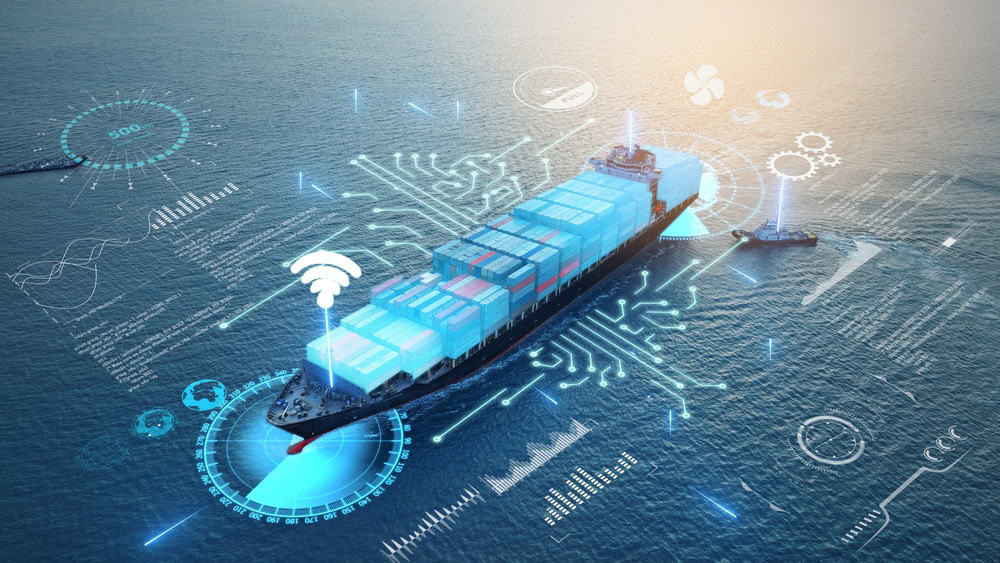In today’s fast-paced global economy, the container shipping industry plays a vital role in the movement of goods across continents. As trade volumes increase and consumer demand grows, the industry must continuously adapt to stay competitive. One of the most significant transformations in recent years has been the digitalization of container shipping. The integration of technology into logistics operations has not only streamlined processes but has also brought about unprecedented levels of efficiency, safety, and visibility. At Shams Arabia Transportation and Storage Company, we recognize the profound impact of digitalization on container shipping and how it is revolutionizing the industry.
In this blog, we will explore the role of digitalization in modern container shipping and how it is shaping the future of global trade.
1. Enhancing Operational Efficiency
One of the most noticeable benefits of digitalization in container shipping is the significant improvement in operational efficiency. Traditional shipping processes, such as booking cargo space, managing documentation, and tracking shipments, involved a lot of manual paperwork and communication, which often led to errors, delays, and inefficiencies.
Digital platforms have automated many of these processes, enabling faster booking, real-time tracking, and seamless communication between shipping companies, customers, and ports. With the use of cloud-based software, shipping companies can now manage and update schedules, cargo manifests, and shipping documentation in real time, reducing human error and increasing speed.
Moreover, digital tools enable efficient route optimization by analyzing factors like weather, traffic, and port congestion. This reduces fuel consumption, ensures timely deliveries, and minimizes environmental impact, making operations more cost-effective and eco-friendly.
2. Real-Time Tracking and Visibility
One of the most transformative aspects of digitalization is the ability to track containers in real time. GPS tracking and Internet of Things (IoT) sensors installed in containers allow shipping companies and their clients to monitor the movement and condition of their cargo at any given time.
For example, a shipping company can track the location of a container as it moves across various ports and through different regions. This level of visibility helps businesses plan more effectively, improve inventory management, and provide customers with accurate delivery times. Furthermore, real-time tracking allows for proactive problem-solving. If a shipment is delayed or at risk of being damaged, parties involved can be notified immediately, allowing them to take corrective actions swiftly.
Digital tools also provide detailed insights into the condition of goods during transit. For example, temperature-sensitive goods can be monitored with IoT sensors to ensure they remain within the required temperature range, preventing spoilage or damage.
3. Improving Supply Chain Transparency and Security
In an increasingly globalized world, supply chain transparency is critical. Digitalization has enabled container shipping to become more transparent by providing a clear, auditable record of every transaction and movement in the shipping process.
Blockchain technology, in particular, is being used to enhance the security and transparency of shipping transactions. With blockchain, all data is encrypted and stored across a decentralized network, making it nearly impossible for malicious actors to alter or tamper with shipping information. This added layer of security is crucial for preventing fraud and ensuring the integrity of the entire supply chain.
By digitizing records, container shipping companies can also provide stakeholders with a more accurate and accessible view of their supply chain. This transparency helps build trust between shippers, customers, and regulatory authorities.
4. Automating Container Handling and Port Operations
Port operations have traditionally been time-consuming and labor-intensive. With the advent of digital technologies, container ports are now adopting automated systems to streamline operations and reduce human error.
Automated cranes, robotics, and autonomous vehicles are increasingly being used to load and unload containers at ports. These systems are controlled by sophisticated software that coordinates the movements of containers, allowing for faster processing and minimizing congestion. Automation also improves safety by reducing the number of human workers required in high-risk areas.
Additionally, ports are implementing digital gate systems that allow trucks to enter and exit seamlessly. By integrating truck booking systems with real-time data from the port, companies can ensure that containers are efficiently moved in and out, reducing waiting times and optimizing throughput.
5. Enhancing Customer Experience with Digital Platforms
The shipping industry has long struggled with providing seamless communication and transparency to customers. With digitalization, companies are now offering customer-facing platforms that allow businesses to track their shipments, manage inventory, and access essential documents all in one place.
These platforms offer a streamlined interface where customers can book shipments, view schedules, request services, and make payments. They also provide comprehensive reporting tools that allow clients to track key metrics and evaluate shipping performance, making it easier to optimize their supply chain and make data-driven decisions.
With the ability to access up-to-date information on their shipments, customers can have more control over their logistics processes, improving their overall experience with the shipping company.
6. Data Analytics and Predictive Maintenance
The integration of big data analytics into container shipping is another important aspect of digitalization. By collecting and analyzing data from various sources, companies can gain valuable insights into operational patterns, port congestion, shipping times, and more.
These insights help shipping companies optimize their fleets, reduce delays, and predict maintenance needs. Predictive maintenance, powered by data analytics, allows companies to identify when containers or vessels are likely to require repairs, thus avoiding unexpected breakdowns that could disrupt the supply chain.
Data analytics also helps companies better forecast demand, enabling them to adjust their fleet size, routes, and cargo capacity in anticipation of future trends. This ensures greater flexibility and responsiveness in an ever-changing market.
Conclusion
Digitalization is transforming the container shipping industry, making it more efficient, secure, and customer-friendly. From real-time tracking and automated container handling to enhanced security and predictive maintenance, digital tools are helping companies optimize operations and stay ahead of the curve.
At Shams Arabia Transportation and Storage Company, we embrace the power of digitalization to provide our clients with cutting-edge solutions that ensure the safe and efficient transport of their goods. By leveraging the latest technologies, we can help businesses streamline their logistics operations, reduce costs, and improve overall performance.
As the shipping industry continues to evolve, we remain committed to incorporating innovative digital tools to stay at the forefront of the industry and provide the best possible service to our clients.
 عربي
عربي عربي
عربي